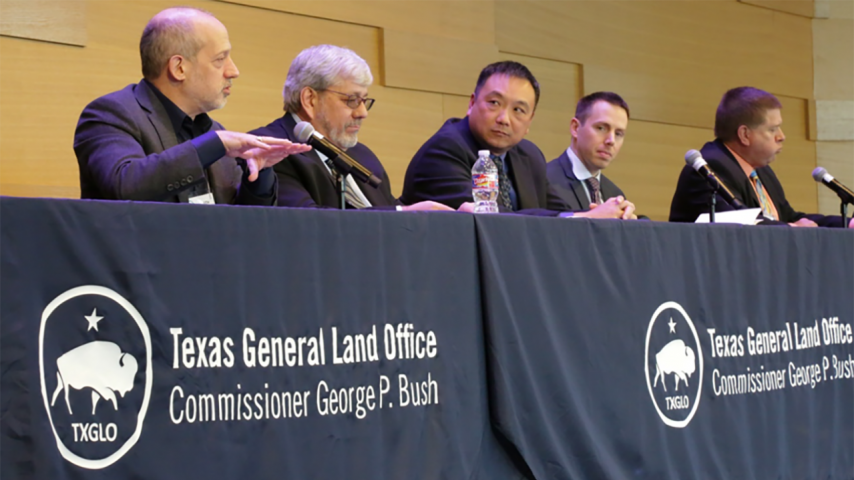
Why does synergy matter in disaster recovery, and who needs to be involved?
A panel recently addressed this, during a meeting organized by the International Code Council for a conference of the Texas General Land Office in Austin, Texas. The discussion focused on (1) building-code development (including applied research to quantify the value of modern building codes), (2) federal financial support for building-code adoption and enforcement, and (3) the role of state and local governments in actually adopting and enforcing codes.
Think of these aspects as three legs of a stool to promote disaster resilience, reduce future losses, and thereby speed recovery.
I presented the contribution of applied research to disaster recovery.
Natural Hazard Mitigation Saves shows through benefit-cost analysis that resilience is affordable, adding perhaps 1% to the construction cost of a new building to provide freeboard. (The first floor of a new code-compliant building commonly has 1 to 2 feet of elevation above the base flood elevation, that is, the flooding level with 1% exceedance probability in a year.)
Code compliance saves more than it costs, on average $6 for flood compliance per $1 added cost. It can be cost effective to build even higher: 5 feet of freeboard saves an additional $5 per $1 of added construction cost.
To recover from disasters quickly, probably the best approach is to avoiding losses in the first place.
The International Code Council offered more evidence that building codes promote resilient communities. ICC’s Gabriel Maser showed how the Florida Building Code reduced windstorm losses by 72%, and how I-Codes in general reduced damage from hail by 10-20% in Missouri and reduced insurance by 90% after Hurricane Harvey.
But enforcement is critical: Maser argued that lax enforcement may have added $16 billion to losses in Dade County after Hurricane Andrew. (Lax enforcement is believed to greatly have aggravated losses outside of Anchorage, Alaska, after an earthquake there on November 30, 2018.) Evidence from Moore, Oklahoma shows that strong codes do not appear to affect sales price or volume, and can increase resale value: 6% for hurricane shutters, 4% for tornado shelters.
But information alone about the cost effectiveness on code adoption and enforcement does little for disaster recovery. Local communities must be able to afford to adopt and enforce the code.
FEMA representatives Donald Leifheit and Michael Ku explained that the Disaster Recovery and Reform Act of 2018 allows the federal government to provide pre- and post-disaster assistance to state and local governments to adopt and enforce the two most recent editions of I-codes, including 6 months of wages for new building inspectors.
So plenty of evidence shows that modern codes save lives and money and promote resilience, in recognition of which FEMA is offering incentives for local communities to adopt and enforce modern codes.
What about the third leg of the resilience stool: the state and local governments that adopt codes and inspect buildings? Jim Olk, mayor of Lucas, Texas and chief building official of Garland, Texas pointed out that disasters start and end locally.
Texas, like a few other home-rule states, leaves code adoption to local governments, and in many of those communities, people distrust government and regulation, and resent the costs associated with enforcement. That distrust and resentment allows builders to successfully argue against code adoption and enforcement. The third leg often is weak.




